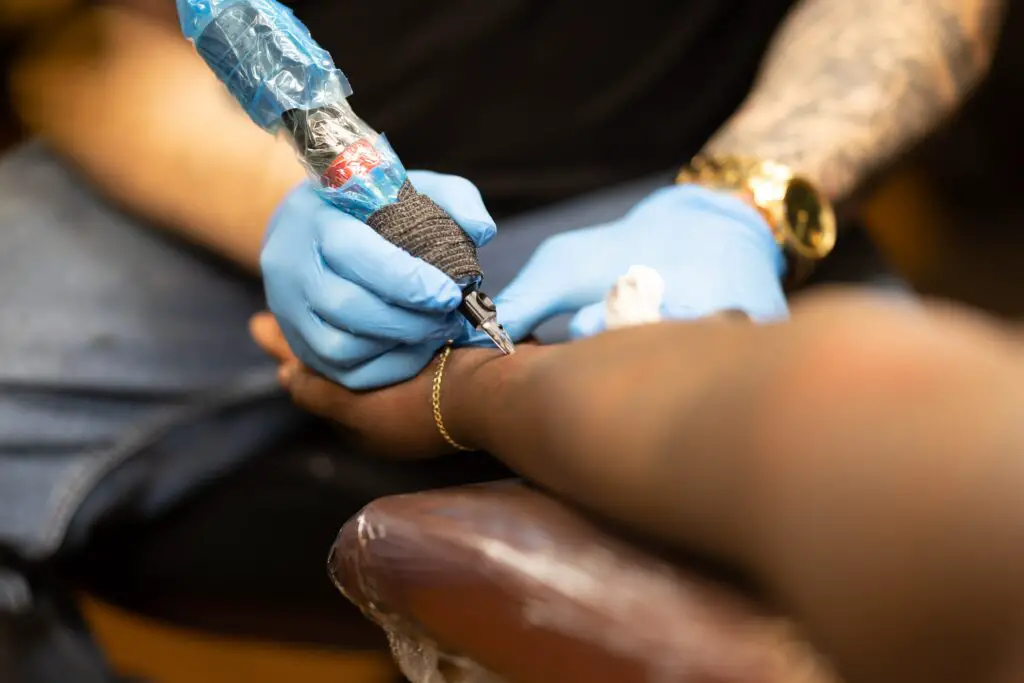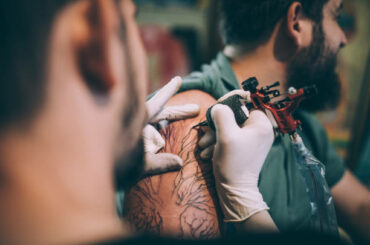Tattoos, while expressive and artistic, can sometimes encounter challenges during the healing process. Two common issues that individuals may face are overworked tattoos and infections. Recognizing the disparities between these conditions is essential for effective care and resolution.
Question: Overworked Tattoo vs Infected Tattoo

In this exploration, we will delve into the distinctive signs and symptoms that characterize an overworked tattoo versus an infected one. Understanding these nuances is crucial for individuals navigating the post-tattoo healing journey. From changes in appearance to the thickness of scabs, each aspect provides valuable insights into whether a tattoo is experiencing overworking or succumbing to an infection.
Let’s embark on a journey to unravel the mysteries behind overworked tattoos and infections, empowering individuals to make informed decisions about their tattoo care.
Contents
Signs of an Overworked Tattoo
Prolonged Redness:
Extended redness beyond the typical healing period can be a key sign of an overworked tattoo.
Explanation: The continuous redness suggests that the skin is experiencing prolonged stress, potentially due to excessive trauma during the tattooing process.
Excessive Scabbing:
Intense trauma during the tattooing process may lead to excessive scabbing, impacting the natural healing process.
Explanation: The presence of thick and numerous scabs on the tattooed area indicates significant trauma to the skin, complicating the scabbing process.
Changes in Physicality:
Significant trauma can result in changes in the physical appearance of the tattooed area, including fading, cloudiness, blurriness, or distortion.
Explanation: The alteration in the tattoo’s physical characteristics indicates that the skin has undergone substantial stress and may require special attention during the healing process.
These signs collectively highlight the importance of recognizing and addressing the specific indicators of an overworked tattoo. Proper aftercare and attention to these signs can contribute to a healthier and more successful healing process.
Signs of an Infected Tattoo
Persistent Redness: Infection may manifest as prolonged redness beyond the typical healing period.
Swelling: Unusual and persistent swelling around the tattooed area can be a sign of infection.
Discharge: The presence of pus or abnormal discharge from the tattooed skin indicates potential infection.
Differentiating Factors:
Pain: Infections often lead to increased pain compared to the discomfort associated with an overworked tattoo.
Fever: The presence of fever is a distinctive factor indicating infection, differentiating it from other complications like overworking.

Understanding these signs is crucial for timely identification and appropriate intervention. It is advised to consult a specialist for an accurate diagnosis and course of therapy.
Aftercare Measures for Overworked Tattoos
Washing with Antibacterial Soap:
Cleanse the tattooed area with antibacterial soap at least twice a day.
Applying Moisturizer:
Begin moisturizing the tattoo after it has been properly cleansed. Hydrating the skin aids in the recovery process and prevents excessive dryness.
Seeking Advice from Tattoo Artists:
Consult with your tattoo artist for personalized aftercare instructions. They can provide guidance on specific care measures tailored to your overworked tattoo.
Proper aftercare is crucial to ensure the healing of overworked tattoos and maintain the integrity of the artwork. Following these measures and adhering to the advice of your tattoo artist contributes to a successful healing process.
Handling Infected Tattoos
Prompt Consultation with Healthcare Professionals:
- Recognize Signs Early: Be vigilant for signs of infection, such as persistent redness, swelling, discharge, or unusual pain.
- Consult a Healthcare Professional: Seek immediate advice from a doctor or dermatologist for a proper assessment of the infection.
Potential Treatment Options:
- Oral Antibiotics: In cases of bacterial infection, oral antibiotics may be prescribed to combat the pathogen and promote healing.
- Topical Steroid Ointments: For mild infections, topical steroid ointments like Derma-Smoothe or Aclovate Cream may be recommended.
- Consultation with a Professional: Work closely with healthcare professionals to determine the most effective and personalized treatment plan based on the type and severity of the infection.
Handling infected tattoos requires swift action and collaboration with healthcare experts to ensure proper diagnosis and treatment.
Conclusion: Overworked Tattoo vs Infected Tattoo
Overworked tattoos can result from excessive trauma to the skin during the tattooing process, leading to prolonged healing and potential scabbing. On the other hand, infections may manifest as persistent redness, swelling, discharge, and other signs that require prompt attention from healthcare professionals.
In light of these differences, individuals with tattoos must remain vigilant and prioritize appropriate care. Timely consultation with healthcare professionals is essential to identify and address any signs of infection, ensuring proper treatment and preventing potential complications.

Vigilance and meticulous aftercare practices, including regular cleaning, moisturizing, and following professional advice, are paramount in maintaining the health and integrity of tattoos. By understanding the nuances between overworked tattoos and infections, individuals can take proactive measures to ensure a positive tattooing experience.
tattoo scab coming off when applying cream





